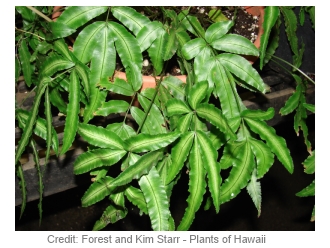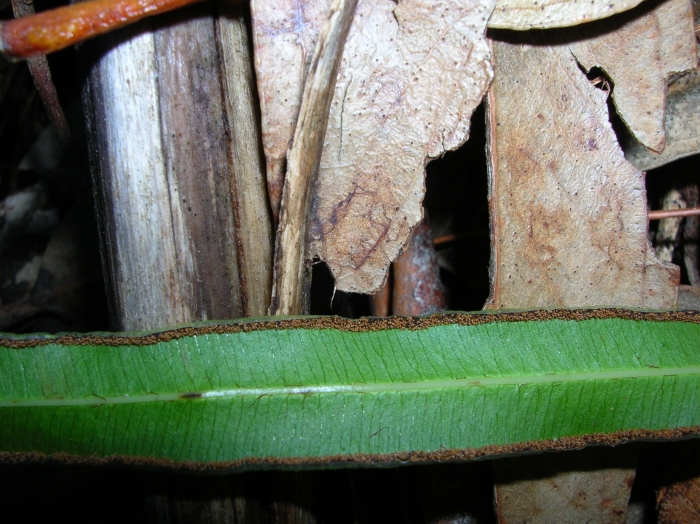





The variety of Pteris cretica ferns that are cultivated display different shaped and colored fronds, but share very similar characteristics and care requirements. The P.cretica albolineata also called the variegated table fern is one of the most common that has broad green leaflets and a pale center. The P.cretica has slimmer green leaflets with serrated edges.
The growth habit (clump forming) of this species is to produce wiry thread like stalks from small rhizomes in the soil and the stalks produce pinnate leaflets in rows. In a way they kind of resemble a palm to me in looks, although they do not have a main stem. I can't really say this plant looks like any other, even other ferns are only similar because they have fronds, so you can completely disagree with the palm resemblance I see.
Care level: For a fern they're slightly easier to grow indoors than others, although they do still require high humidity levels. They do follow the same care conditions as other ferns but seem to be a bit more forgiving if a grower gets it wrong. During the warmer months in temperate regions they can be placed on a balcony, porch or patio, if it's shaded enough.
Pruning is good for keeping the plant in good shape looking healthy and will encourage new growth. Just cut back any dying or untidy fronds when needed by cutting with a sharp knife or secateurs as close to the bottom of the stalk as possible.

Spores

The picture above is a close up of a leaflet displaying what is called spores. Don't think this is any type of insect problem or any type of problem, it's a sign the plant is in good health. Spores are a kind of seed that can be used to create more plants (propagate.
Insects: Insects such as scale, mealy bug and aphids can take a liking to this plant quite easily. Identify any strange looking foreign matter (scale can be identified by it's brown shells, for example) and take remedial action as soon as possible.
Dry air and lack of water: These are the two biggest requirements a grower must take care of with a fern. The fronds can die back, turn yellow (could also be warm air) or the tips turn brown when the air is too dry and the soil is dry.
Too much sun: Too much direct sunlight will turn the fronds pale or scorch the surface of them.
Copyright © www.100flowers.win Botanic Garden All Rights Reserved